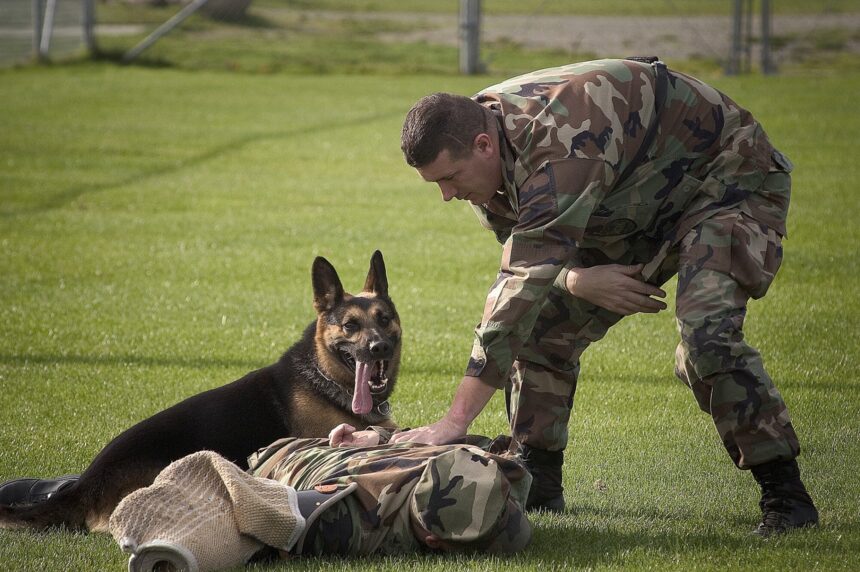Today, a well-trained K9 is a safety and companionship must, not just a point of pride. Elite K9 training for personal security, police work, or sports requires dedication and patience. It also needs a deep understanding of dog behavior.
This guide will explore the techniques to make your K9 a top-performing dog. You’ll gain tips and insights. They will help you enhance your dog’s skills and build a trusting, high-performing bond.
Read on to learn more.
Understanding Your K9’s Potential
Before you start training, it’s crucial to understand your dog’s unique traits and potential. Not all dogs are suited for the same types of training, and recognizing your pet’s inherent abilities will guide your approach.
Begin by assessing your dog’s breed characteristics. Different breeds have been developed over generations for specific tasks. German Shepherds and Belgian Malinois are smart and hard-working.
So, they are ideal for police and protection work. So, Border Collies excel in agility and obedience competitions. They have quick reflexes and high energy levels.
Establishing the Basics of K9 Training
Every elite K9 needs a solid foundation in basic obedience. Without these fundamental skills, advanced training becomes difficult, if not impossible.
Start with the essential commands such as “sit,” “stay,” “come,” and “heel.” These commands form the backbone of all training and help establish you as the leader. Use positive reinforcement. Reward your dog with treats or praise when they follow a command.
In training, consistency is essential. To keep your dog from becoming confused, make sure everyone in the household uses the same orders and rewards. Even brief practice sessions on a regular basis will help your dog master new skills and gain confidence.
The Role of Patience and Persistence
Training an elite K9 is not an overnight process. It requires patience and persistence to see long-term results. Understanding this will make the training experience more rewarding for both you and your dog.
Set realistic expectations and celebrate small victories. Each step forward is progress, even if it’s just your dog holding a sit for a few seconds longer than before. Recognizing these milestones keeps you motivated and encourages your dog to continue learning.
When challenges arise, take a step back and reassess your approach. Sometimes a different technique or a break from training can help overcome obstacles. Remember, training should be a positive experience, so avoid frustration and negativity.
Advanced Obedience Commands
After your dog masters basic obedience, teach them advanced commands. This will sharpen their skills and improve their performance.
Commands such as “down-stay” and “drop it” are useful for maintaining control in dynamic situations. These commands require greater self-control and focus from your dog, pushing their abilities to the next level.
Incorporate hand signals alongside verbal commands. Elite dogs are very visual. Hand signals can boost verbal cues. They improve communication between you and your dog.
The Importance of Socialization
Socialization is a critical aspect of training that should not be overlooked. A well-socialized dog is confident and less likely to react negatively to unfamiliar situations or people.
Expose your dog to a variety of environments, sounds, and people from an early age. This helps them become accustomed to the world around them and reduces fear and anxiety.
Organize controlled interactions with other dogs and animals. These experiences teach your dog to behave and socialize. They make your dog more adaptable and less aggressive.
Use positive reinforcement to reward calm, friendly behavior during social interactions. This encourages your dog to view these experiences positively and look forward to them.
Building Agility and Endurance
Agility and endurance are crucial for elite K9s. This is especially true for those in competitive sports or tough jobs.
Incorporate regular exercise into your dog’s routine to build stamina and strength. Running, swimming, and playing fetch are great for fitness.
Set up an agility course at home or enroll your dog in agility classes. These exercises improve coordination, speed, and confidence while providing mental stimulation.
Gradually increase the difficulty and complexity of agility exercises as your dog improves. This keeps them challenged and engaged and helps prevent boredom and complacency.
Introducing Specialty Training
Specialty training is where your dog’s unique talents truly shine. Choose a specialty that matches your dog’s strengths and interests. It could be protection work, scent detection, or search and rescue.
K9 protection training involves teaching your dog to guard or attack on command. This requires a strong foundation in obedience and should only be pursued with the guidance of a professional trainer.
Scent detection uses your dog’s keen sense of smell to find specific scents, like explosives or drugs. This type of training is mentally stimulating and highly rewarding for scent-driven breeds.
Utilizing Technology in K9 Training
Technology can help improve your dog’s training and track their progress. Consider using GPS tracking collars to monitor your dog’s movements during off-leash training. This provides peace of mind and helps ensure their safety.
Training apps can provide helpful insights and reminders. They can help you stay consistent with your training schedule. Many apps also provide tutorials and tips for tackling specific training challenges.
Invest in quality training tools, like e-collars or clickers. They improve communication and reinforce good behaviors.
Monitoring Health and Nutrition
A healthy dog is a happy and effective performer. Proper nutrition and medical care are vital for your dog’s training. They will maximize their potential.
Consult with your veterinarian to develop a balanced diet tailored to your dog’s specific needs. Proper nutrition supports energy levels, muscle development, and well-being.
Schedule regular veterinary checkups to monitor your dog’s health and address any issues promptly. Preventative care can help identify potential problems before they become serious. Pay attention to your dog’s body language and behavior.
A Model for Elite Training
Israel has gained a notable reputation in the field of K9 training, particularly for protection and working dogs. Specialized trainers in Israel use rigorous methods. Israel Protection K9 combines old techniques with modern behavioral psychology.
Israeli trainers often use real-world scenarios in their sessions. This ensures the dogs are ready for practical use in various environments.
Exploring the Expert Techniques to Train Your Elite K9
Training your elite K9 for maximum performance is a rewarding endeavor that requires dedication, patience, and understanding. By focusing on your dog’s unique strengths, you can unlock their potential. This will build a partnership based on trust and respect.
Remember, training is an ongoing process that benefits both you and your dog. With the right approach and resources, you can achieve remarkable results and enjoy the many rewards of a well-trained K9.
Visit our website for more like this.


